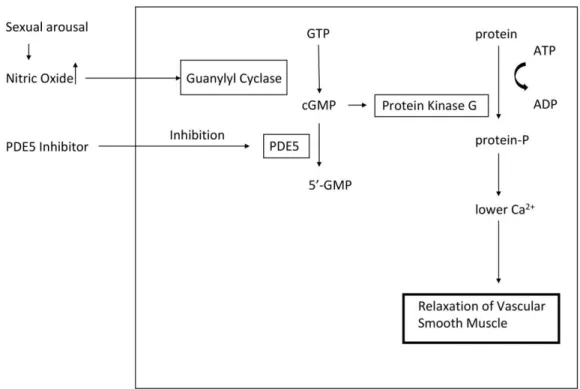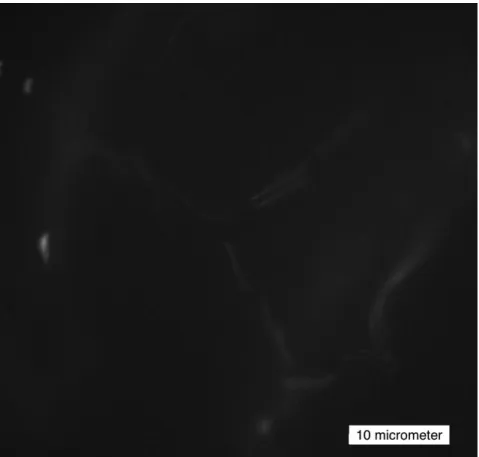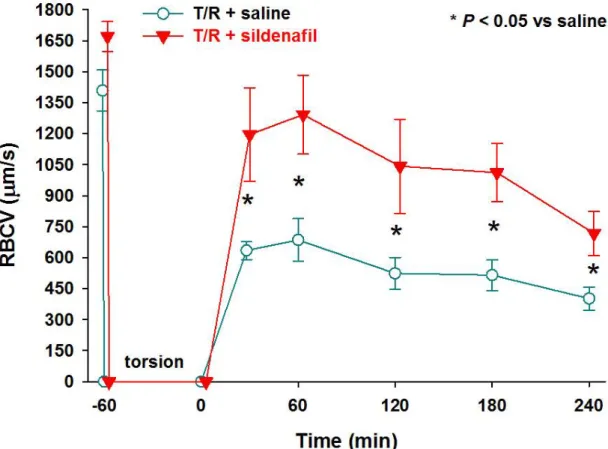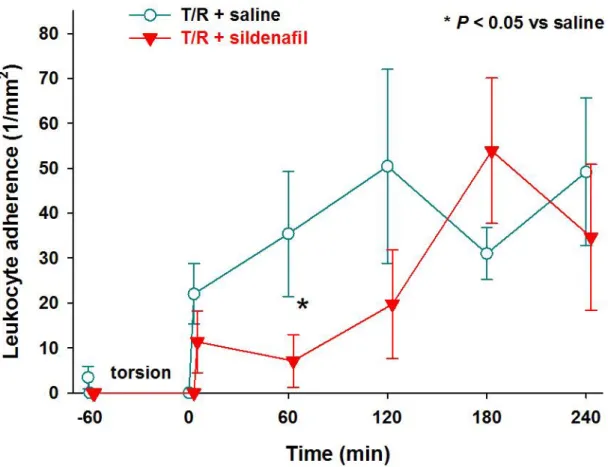See discussions, stats, and author profiles for this publication at: https://www.researchgate.net/publication/325269416
Microcirculatory effects of sildenafil in experimental testicular torsion in rats
Article in World Journal of Urology · May 2018
DOI: 10.1007/s00345-018-2340-5
CITATIONS
0
READS
45 5 authors, including:
Some of the authors of this publication are also working on these related projects:
Vesicovaginal fistula repairView project Márton Oroszi
University of Szeged 3PUBLICATIONS 0CITATIONS
SEE PROFILE
Andrea Szabó University of Szeged 74PUBLICATIONS 980CITATIONS
SEE PROFILE
Ádám Miklós Fehér University of Szeged 6PUBLICATIONS 9CITATIONS
SEE PROFILE
Zoltan Bajory University of Szeged 36PUBLICATIONS 114CITATIONS
SEE PROFILE
All content following this page was uploaded by Márton Oroszi on 01 February 2019.
The user has requested enhancement of the downloaded file.
Microcirculatory effects of sildenafil in experimental testicular torsion in rats Márton Oroszi1, Andrea Szabó2, Ádám Miklós Fehér1, Gábor Deák1, Zoltán Bajory1
1Department of Urology, Szent-Györgyi Albert Medical and Pharmaceutical Center, University of Szeged, Szeged, Hungary
2Institute of Surgical Research, University of Szeged, Szeged, Hungary
Word count: 3008 References: 23
Corresponding author:
Márton Oroszi M.D.
Department of Urology, Szent-Györgyi Albert Medical and Pharmaceutical Center, University of Szeged, Szeged, Hungary
Kálvária sgt. 57, Szeged, 6725, Hungary oroszim@gmail.com
DISCLOSURES
Dr. Oroszi: nothing to disclose.
Dr. Szabó: nothing to disclose.
Dr. Deák: nothing to disclose.
Dr. Bajory: nothing to disclose.
ABSTRACT
Purpose: Investigate the short term effect of sildenafil on microcirculation, especially the velocity, the pattern of the flow and the recruitment of the leukocyte in post- capillaries.
Methods: In male Sprague-Dawley rats, the microcirculatory consequences of 60 minutes experimental testicular torsion, followed by 240 minutes of reperfusion, were examined. Using fluorescence intravital microscopy, changes in red blood cell velocity in post-capillary venules and rolling as well as adhesion of leukocytes in the post- capillary venules were examined before the torsion and every hour during the reperfusion period. Sildenafil was given 10 minutes prior to reperfusion (iv. 0.7 mg/kg, n=6), while control animals received saline vehicle (n=5).
Results: The characteristic flow motion disappeared in the affected testicular and red blood cell velocity values were dramatically decreased (by >50%) during the reperfusion phase, and both rolling and adhesion of leukocytes increased. Sildenafil treatment resulted in significantly higher red blood cell velocity values during the entire reperfusion period, but exerted only a temporary positive effect on the post-ischaemic leukocyte-endothelial interactions.
Conclusions: Intraoperative administration of sildenafil during surgical detorsion may provide marked testicular microperfusion benefits, but failed to influence the overall leukocyte-driven microcirculatory inflammatory reactions.
INTRODUCTION
Testicular torsion (TT) is one of the most common indications for emergency surgery amongst children, adolescents and young adults. The prevalence of torsion may affect 3.8-4.5 men out of 100,000 who are admitted to hospital with sudden testicular pain [1,2]. Prompt diagnosis and treatment are essential, as cell-hypoxia- induced damage increases over time [3,2,4].
Successful surgical intervention can be achieved in 90-100% of cases, if performed within 4-8 hours from the onset of complaints; however, the overall success rate decreases drastically over time (within 12 hours 50%, and 24 only 10%) [5].
Significant microcirculation impairment and permanent hypoxia can result in irreversible damage, starting from the 6th hour of the pain onset [2]. As described previously by Gandhi et al., administration of sildenafil can improve the microcirculation of the testicle by limiting hypoxia-related irreversible cell death, improving surgical outcomes. Furthermore, the ischaemia/reperfusion (I/R) injury of the testicle can also be directly decreased through the simultaneous administration of antioxidants [6].
Testicular damage (during torsion/detorision) can arise from two separate mechanisms. Firstly, torsion of the spermatic cord can dramatically reduce or stop testicular blood in-flow, causing permanent hypoxaemia and subsequent cell death.
After the spermatic cord obstruction, the tissue will not be able to receive any oxygen.
So in these tissues the hypoxia inflicts a reduced level of ATP. Without the ATP, the indispensable processes will not able to work, so elicit a cell death. It has long been known that the length of the hypoxaemia and the seriousness of the cell damage change in inverse proportion [7]. Secondly, reactive oxygen species (ROS) can cause deterioration after reperfusion (reperfusion damage). Right after the blood flow
reestablishment, the ROS formation was started (Figure 1.). At a relevant concentration of ROS, it can cause the damage in the post-ischaemic tissues including endothelial barrier dysfunction, increased expression of endothelial cell adhesion molecules, enhanced leukocyte-endothelial cell adhesion and increased production of inflammatory mediators (e.g., platelet activating factor) [7,8]. Nicotinamide adenine dinucleotide phosphate (NADPH) is the key enzyme catalyzing the formation of ROS and it is released by leukocytes [9]. The endothelial cell (EC) monolayer simulating various microvascular alteration, including an enhanced ROS production, increases the leukocyte adhesivity to the EC, and damages the barrier function of the EC [7].
Microcirculation monitoring is generally performed by Intravital Video Microscope (IVM), in vitro, and Orthogonal Polarisation Spectral Imaging can be applied, in vivo, as an alternative option [10].
In our current study, we aimed to examine the effect of sildenafil (Figure 2.) on microcirculation by measuring the recruitment of the leukocyte and red blood cell velocity (RBCV), and the pattern of the flow in post-capillaries examined with IVM, before and after I/R damage in rat testicles.
MATERIALS AND METHODS
In our current study, post-capillary RBCV, flow pattern and leukocyte recruitment has been analyzed in rat testicles, after I/R damage. Inflammatory markers and oxidative stress parameters were not been examined because they have been already investigated in other studies.
The appropriate National Institutes of Health Guidelines were applied which are approved by the Animal Welfare Committee of University of Szeged [11].
Study groups
Sixty-minute TT were performed in male Sprague-Dawley rats (weight 250 ± 10g, n=11), randomized into 2 subgroups. sildenafil was administered, in a single dose of 0.7 mg/kg (dissolved in 1 ml/kg saline, iv.), 10 minutes prior to reperfusion (torsion + SIL group, n=5), while control animals received saline vehicle (1 ml/kg saline iv. + torsion, n=6). The testicular microcirculation was monitored by fluorescence IVM (Figure 3., 4.) before the experimental torsion, right after, and hourly, during the 4 hour reperfusion period.
Surgical exposure
Sodium pentobarbital (45 mg/kg) was introduced intraperitoneally for initiating anesthesia. Then the trachea was isolated and cannulated (for intubation, maintaining the homeostatic body oxygen level). Jugular vein was also isolated and cannulated (infusing Ringer lactate at the rate of 10 ml/kg/h, maintaining homeostatic volume stability, and administering pentobarbital at a rate of 5 mg/kg, maintaining the anesthesia and allowing sildenafil or saline injection of the appropriate groups). The carotid artery was isolated for central blood-pressure monitoring (Experiment Ltd., Budapest, Hungary). Thereafter, testicular isolation was carried out by lateral incision and weaning from the epididymis preserving the vessels, tunica albuginea and spermatic cord. Finally, to mimic testicular-torsion, the testicle was twisted 720º clockwise, maintaining the hypoxia for 60 minutes.
Testicular microcirculation monitoring
After the 60 minutes of torsion, fluorescein isothiocyanate-labeled erythrocytes (0.2 ml intravenously, Sigma Aldrich) staining red blood cell, and rhodamine-6G (0.2%
in 0.1 ml iv., Sigma Aldrich) staining leukocytes were injected. Thereafter, the testicles were isolated and examined by Zeiss Axiotech Vario 100HD microscope, 100-W HBO mercury lamp, and Acroplan 20x water immersion objective (Carl Zeiss GmbH, Jena, Germany), and recorded by charge-coupled device video camera (AVT HORN-BC 12, Aalen, Germany) connected to a personal computer [11]. A minimum of 5 post-capillary venules was analyzed in each subject, in order to evaluate RBCV and the presence of the pulsatile pattern and leukocyte-endothelial cell interactions (rolling and adherence of leukocytes). Leukocytes rolling was defined as being at least 40% slower compared to red blood cell movement. Leukocyte adherence was defined as attachment to the vessel wall for at least 30 seconds.
Statistical Analysis
Differences between groups were compared by 2-way ANOVA test. All statistical analyses were performed with SigmaStat for Windows (Jandel Corporation, San Rafael, CA, USA).
RESULTS Red blood cell
Testicular-torsion resulted in a complete cessation of microcirculatory perfusion in the testicular capillaries (Figure 5.). Reperfusion was associated with marked deterioration of RBCV (all of the post-ischaemic values were lower than those of
baseline, in both groups, not shown) (p < 0.05, measured by 2-way ANOVA test). After detorsion, the blood flow came back in a pulsatile pattern in the sildenafil-treated group.
The RBCV was measured in the high flow periods, when the pulsatile pattern could be observed. Sildenafil treatment resulted in significant elevation of RBCV data every hour, (as compared to saline) (p < 0.05, measured by 2-way ANOVA test), but values did not regain the original velocity baseline.
Leukocyte rolling and adherence
There was a marked increase during reperfusion in both leukocyte rolling (Figure 6.) and adherence (Figure 7.) in the testicular post-capillary values. Sildenafil exerted only a temporary positive effect at the onset of reperfusion. In the sildenafil- treated group, rolling leukocytes only in the 30th minute and the adherent leukocytes only in the 60th minutes showed significantly better results when compared to the saline group. These results do not show us significantly better results in overall.
DISCUSSION
In this current study, we examined the effect of sildenafil on microcirculation (Figure 5., 6., 7.) during and after I/R injury in rat testicles.
The major findings were as follows:
sildenafil significantly improves the microcirculatory blood flow
sildenafil has minor effect on leukocytes recruitment or the inflammatory cascade.
Clinical diagnosis of testicular-torsion is mainly driven by accurate anamnesis (sudden and severe pain located in the testicle); however, physical examination and confirmation of impaired blood flow with Doppler ultrasound are also essential [3].
Physical examination usually applied as rotating the testicle to the correct position, manually, from the inside to outside (testicles are most often torquated medially);
however, one-third of cases are twisted laterally [9] requiring the opposite of the aforementioned approach. In the case of manual detorsion failure, acute surgery should be performed as appropriate to rotate the testicle to the correct position restoring arterial flow. Reperfusion damage, however, can occur, which may cause further tissue-impairment. Leukocytes are essential in the reperfusion, as they release NADPH oxidase, catalyzing the molecular oxygen transformation to ROS (Figure 1.) with subsequent cell death [12-15]. Infertility and azoospermia my occur in the long- term [16], mainly driven by impaired sperm cell morphology and the presence of anti- sperm antibodies (not sperm cell motility abnormalities) after surgery [16].
The beneficial effects of sildenafil have been proven after I/R or other type of injury in different organs.
In a recent study, Behmengurt et al. investigated, in rats, the acute cardioprotective effect of a phosphodiesterase 5 (PDE5) inhibitor by activating the mitochondrial large-conductance Ca2+-sensitive potassium channels. They used 30 minutes of ischaemia, then 60 minutes of reperfusion. They introduced the sildenafil 10 minutes prior to ischaemia. In their control animals, infarct size was 52 ± 8%, compared to the sildenafil-treated group where the infarct size decreased to 35 ± 6%
(p < 0.05 vs. control) [17].
Ockaili et al. reported decreased area of infarcted myocardium after myocardial infarction. They introduced the PDE5 inhibitor (0.7 mg/kg, iv.) 30 minutes prior to 30
minutes of heart ischeamia and 3 hours of reperfusion, in rabbits. In the control group, the infarct size was 33.8 ± 1.7%; this reduced to 10.8 ± 0.9% a (68% reduction) (p <
0.05) [18].
Kolettis et al. investigated sildenafil dosages (low dose (0.7 mg/kg)), (high dose (1.4 mg/kg)) on an I/R (20 minutes/45 minutes) injured heart. They examined the following parameters: post-ischaemic recovery and hypercontracture. Low dose sildenafil showed better results (75.1 ± 2.4%, p = 0.0069), compared to both the control group (62.9 ± 2%) and the high dose sildenafil group (69.1 ± 2.1%), in post-ischaemic recovery, and found no difference in hypercontracture between the groups [19].
High doses of PDE5 inhibitor diminish the mucosal lesions on indomethacin- pretreated rats stomach. In the study mentioned above, a group of rats received 2 mg/kg (PDE5I-2), and another group received 10 mg/kg (PDE5I-10) PDE5 inhibitor.
The gastric mucosal lesions (GML) count and area were examined. In the PDE5I-10 group, the GML count was significantly lower (1.25 ± 1.38%, p < 0.05) compared to the control group (6.25 ± 3.49%, p < 0.05) and the GML area was significantly lower as well (0.75 ± 0.88% - 21 ± 12.35%, p < 0.001) [20].
In testicle, similarly good results are achieved.
Zavras et al. examined the effect of erythropoietin (EPO) (1,000 IU/kg) and sildenafil (0.7 mg/kg), compared to the control group which received no drugs. In the 60th minute of ischaemia, they received the drugs inraperitoneally. Thirty minutes later, the ischaemia stopped. After 24 hours of reperfusion, they carried out histopathological examination on the testicles. Both the EPO (main grade: 3.24, range: 3.05-3.45) and the sildenafil group (mean grade: 2.69, range: 2.4-2.9) had significantly better results than the control group (mean grade: 3.81, range: 3.65-4, p = 0.0002 and p =
0.00000009), but the sildenafil group had significantly better results compared with the EPO-treated group (p = 0.0002) [21].
In another study, Beheshtian et al. examined laboratory parameters — after introducing sildenafil to rats in the 30th minute, intraperitoneally, (total of 60 minutes of torsion) — after 4 hours of reperfusion and the germ cell apoptosis after 24 hours of reperfusion. The group which received sildenafil had significantly better results compared to the group which did not receive the drug (MDA: 148.81 ± 17.97 – 169.69
± 14.66, p < 0.05, CAT: 299.46 ± 37.11 – 235.85 ± 24.09, p < 0.05, SOD: 1797.34 ± 126.05 – 1505.58 ± 154.44, p < 0.05, apoptotic nuclei: 4.83 ± 2.96 – 9.25 ± 3.26, p <
0.05) [22].
Yildiz et al. investigated the effect of double doses (1.4 mg/kg) of sildenafil after I/R injury in the testicle. In their study, they induce 2 hours of torsion, then 2 hours of reperfusion. In the 60th minute of torsion, they introduce the sildenafil (0.7 mg/kg and 1.4 mg/kg). After the 2nd hour of reperfusion, they examined the laboratory parameters [23,24]. They found significantly better results in the group where the rats received 0.7 mg/ml sildenafil (group 3) compared to the groups where the rats received 1.4 mg/ml sildenafil (group 4) and the control group (group 2) (GSH (µmol/g protein): 1.26 ± 0.42 (group 3) – 1.01 ± 0.1 (group 4) -1.03 ± 0.15 (group 2) p ˂ 0.05, MDA (µmol/g protein):
0.64 ± 0.04 (group 3) – 0.77 ± 0.12 (group 4), 0.84 ± 0.02 (group 2) p ˂ 0.01, NO (µmol/g tissue) 31.03 ± 0.46 (group 3) – 33.51 ± 0.27 (group 4) – 33.48 ± 0.61 (group 2) p ˂ 0.01) [24].
Istanbulluoglu et al. examined orally-administered PDA5-Inhibitor (vardenafil), in pigs, after I/R injury of their testicle. They created 2 hours of torsion. Forty-five minutes prior to the end of the torsion, they introduced the vardenafil (0.4 mg/kg) orally. After 8 hours of reperfusion they investigated the germ cell apoptosis through the apoptosis
protease-activating factor (APAF-1) in the testicles. They found no significantly better results between the vardenafil-treated group (VTG) compared to the control group (CG) (APAF-1: 10 ± 4.08 (VTG) – 8 ± 2.44 (CG), p > 0.05) [25]. These results may be due to the small amount of the PDE5 inhibitor used.
All the above mentioned articles prove the significantly good effect of the sildenafil on testilculars after I/R damage, even though the ischaemia then the reperfusion cause a huge damage to the tissue.
In our study, significantly better results were obtained in the sildenafil-treated group, compared to the control group, in microcirculatory parameters and in the blood flow pattern (p < 0.05, Figure 5.) after 1 hour of torsion. Minor significant differences were found between the groups in the number of leukocytes (Figure 6., 7.), which means that the sildenafil had no overall effect on the acute inflammation of the reperfusion phase.
Our study has several limitations. The number of rats included was relatively small and long-term follow-up did not occur. Oral administration of the sildenafil, which would be more true-to-life, was not tried. One study was found where the authors tried orally-administrated PDE5 inhibitor, unsuccessfully, since the dose was insufficient.
Further study should be carried out on larger sample sizes and using different methods of administration of drugs. Sildenafil was used in Sprague-Dawley rats; however, the mechanism of action of sildenafil in microcirculation changes in humans with TT is still not clearly understood.
CONCLUSION
Intravenous sildenafil administration improves microcirculation in the testicle, providing significantly lower ischaemic burden on testicular cells and improves short- and long-term surgical outcomes. Sildenafil has a minor influence on leukocyte-driven microcirculatory inflammatory reactions in the acute phase of the reperfusion state.
REFERENCES
1. Williamson RC (1976) Torsion of the testis and allied conditions. The British journal of surgery 63 (6):465-476
2. DaJusta DG, Granberg CF, Villanueva C, Baker LA (2013) Contemporary review of testicular torsion: new concepts, emerging technologies and potential therapeutics. Journal of pediatric urology 9 (6 Pt A):723-730. doi:10.1016/j.jpurol.2012.08.012
3. Ádám Fehér ZB (2016) A review of main controversial aspects of acut testicular torsion.
Journal of Acute Disease 5 (1):1-8
4. Gatti JM, Patrick Murphy J (2007) Current management of the acute scrotum. Seminars in pediatric surgery 16 (1):58-63. doi:10.1053/j.sempedsurg.2006.10.008
5. Sharp VJ, Kieran K, Arlen AM (2013) Testicular torsion: diagnosis, evaluation, and management. American family physician 88 (12):835-840
6. Gandhi J, Dagur G, Sheynkin YR, Smith NL, Khan SA (2016) Testicular compartment syndrome: an overview of pathophysiology, etiology, evaluation, and management.
Translational andrology and urology 5 (6):927-934. doi:10.21037/tau.2016.11.05
7. Granger DN, Kvietys PR (2015) Reperfusion injury and reactive oxygen species: The evolution of a concept. Redox biology 6:524-551. doi:10.1016/j.redox.2015.08.020
8. Bradley JR, Johnson DR, Pober JS (1993) Endothelial activation by hydrogen peroxide.
Selective increases of intercellular adhesion molecule-1 and major histocompatibility complex class I. The American journal of pathology 142 (5):1598-1609
9. Sessions AE, Rabinowitz R, Hulbert WC, Goldstein MM, Mevorach RA (2003) Testicular torsion: direction, degree, duration and disinformation. The Journal of urology 169 (2):663- 665. doi:10.1097/01.ju.0000047381.36380.0e
10. Bajory Z, Szabo A, Deak G, Varga R, Pajor L (2012) Orthogonal polarization spectral imaging:
a novel tool for examination of microcirculatory changes in the testis. Journal of andrology 33 (3):499-504. doi:10.2164/jandrol.111.013599
11. Bajory Z, Varga R, Janovszky A, Pajor L, Szabo A (2014) Microcirculatory effects of selective endothelin-A receptor antagonism in testicular torsion. The Journal of urology 192 (6):1871- 1877. doi:10.1016/j.juro.2014.06.086
12. Endrich B, Asaishi K, Gotz A, Messmer K (1980) Technical report--a new chamber technique for microvascular studies in unanesthetized hamsters. Research in experimental medicine Zeitschrift fur die gesamte experimentelle Medizin einschliesslich experimenteller Chirurgie 177 (2):125-134
13. Menger MD, Marzi I, Messmer K (1991) In vivo fluorescence microscopy for quantitative analysis of the hepatic microcirculation in hamsters and rats. European surgical research Europaische chirurgische Forschung Recherches chirurgicales europeennes 23 (3-4):158-169 14. Messmer K, Krombach F (1998) [Microcirculation research in experimental surgery]. Der Chirurg; Zeitschrift fur alle Gebiete der operativen Medizen 69 (4):333-338
15. Szabo A, Kaszaki J, Boros M, Nagy S (1997) Possible relationship between histamine and nitric oxide release in the postischemic flow response following mesenteric ischemia of different durations. Shock (Augusta, Ga) 7 (5):376-382
16. Arap MA, Vicentini FC, Cocuzza M, Hallak J, Athayde K, Lucon AM, Arap S, Srougi M (2007) Late hormonal levels, semen parameters, and presence of antisperm antibodies in patients treated for testicular torsion. Journal of andrology 28 (4):528-532.
doi:10.2164/jandrol.106.002097
17. Behmenburg F, Dorsch M, Huhn R, Mally D, Heinen A, Hollmann MW, Berger MM (2015) Impact of Mitochondrial Ca2+-Sensitive Potassium (mBKCa) Channels in Sildenafil-Induced Cardioprotection in Rats. PloS one 10 (12):e0144737. doi:10.1371/journal.pone.0144737 18. Ockaili R, Salloum F, Hawkins J, Kukreja RC (2002) Sildenafil (Viagra) induces powerful cardioprotective effect via opening of mitochondrial K(ATP) channels in rabbits. American journal of physiology Heart and circulatory physiology 283 (3):H1263-1269.
doi:10.1152/ajpheart.00324.2002
19. Kolettis TM, Kontaras K, Spartinos I, Maniotis C, Varnavas V, Koutouzis M, Mourouzis I, Papalois A, Pantos C, Kyriakides ZS (2010) Dose-dependent effects of sildenafil on post- ischaemic left ventricular function in the rat isolated heart. The Journal of pharmacy and pharmacology 62 (3):346-351. doi:10.1211/jpp.62.03.0009
20. Karakaya K, Hanci V, Bektas S, Can M, Ucan HB, Emre AU, Tascilar O, Ozkocak Turan I, Comert M, Irkorucu O, Karadeniz Cakmak G (2009) Mitigation of indomethacin-induced gastric mucosal lesions by a potent specific type V phosphodiesterase inhibitor. World journal of gastroenterology 15 (40):5091-5096
21. Zavras N, Kostakis ID, Sakellariou S, Damaskos C, Roupakas E, Tsagkari E, Spartalis E, Velaoras K, Dontas IA, Karatzas T (2014) Comparison of erythropoietin and sildenafil protective role against ischemia/reperfusion injury of the testis in adult rats. International urology and nephrology 46 (4):731-736. doi:10.1007/s11255-013-0569-x
22. Beheshtian A, Salmasi AH, Payabvash S, Kiumehr S, Ghazinezami B, Rahimpour S, Tavangar SM, Dehpour AR (2008) Protective effects of sildenafil administration on testicular torsion/detorsion damage in rats. World journal of urology 26 (2):197-202.
doi:10.1007/s00345-008-0243-6
23. Yildiz H, Durmus AS, Simsek H, Yaman I (2011) Effects of sildenafil citrate on torsion/detorsion-induced changes in red blood cell and plasma lipid peroxidation, antioxidants, and blood hematology of male rats. European journal of obstetrics, gynecology, and reproductive biology 159 (2):359-363. doi:10.1016/j.ejogrb.2011.07.023
24. Yildiz H, Durmus AS, Simsek H, Yaman M (2012) Dose-dependent protective effect of sildenafil citrate on testicular injury after torsion/detorsion in rats. Andrologia 44 Suppl 1:300- 306. doi:10.1111/j.1439-0272.2011.01181.x
25. Istanbulluoglu MO, Zor M, Celik A, Cicek T, Basal S, Ozgok A, Ustun H, Ozgok Y (2011) Effects of vardenafil on testicular torsion/detorsion damage: an experimental study in pigs.
Urologia internationalis 86 (2):228-232. doi:10.1159/000321492
26. McCord JM (1985) Oxygen-derived free radicals in postischemic tissue injury. The New England journal of medicine 312 (3):159-163. doi:10.1056/NEJM198501173120305
FIGURE LEGENDS
Figure 1.: The mechanisms of ROS production by xanthine oxidase in tissues exposed to ischemia and reperfusion. At the time of ischemia, ATP is transformed to hypoxantine. Then, at reperfusion,
xanthine oxidase catalysis hypoxanthine and the restored tissue O2 to both superoxide (O−2) and hydrogen peroxide (H2O2) [26].
Figure 2.: The mechanism of PDE5 inhibitor. Sexual arousal causes enhanced level of NO, which stimulate the guanylyl cyclase to convert GTP to cGMP. PDE5 inhibitor, inhibit the PDE5 enzyme, which is responsible for the catabolism of cGMP to 5’-GMP. The increased level of cGMP activates the protein kinase G, which decreases the Ca2+ level. As a result of this, smooth muscle relaxation and
subsequently erection are formed.
Figure 3.: Isothiocyanate labelled red blood cells detected by IVM
Figure 4.: Rhodamine-6G labelled Leukocytes detected by IVM
Figure 5.: Effect of sildenafil on the testicular torsion-induced deterioration of the RBCV during reperfusion (* P < 0.05, 2-way ANOVA test)
Figure 6.: Effect of sildenafill on the testicular torsion-induced leukocyte rolling formation during reperfusion (* P < 0.05, 2-way ANOVA test).
Figure 7.: Temporary positive effect of sildenafil on the testicular torsion-induced increase in the sticking form of leukocyte-endothelial interactions during reperfusion (* P < 0.05, 2-way ANOVA
test).
View publication stats View publication stats



